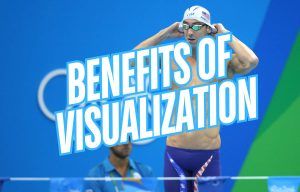
6 Benefits of Visualization for Swimmers
Wondering what visualization can do for your swimming? Here are some evidence-based benefits of visualization for swimmers for more confidence, less choking, and even better technique.
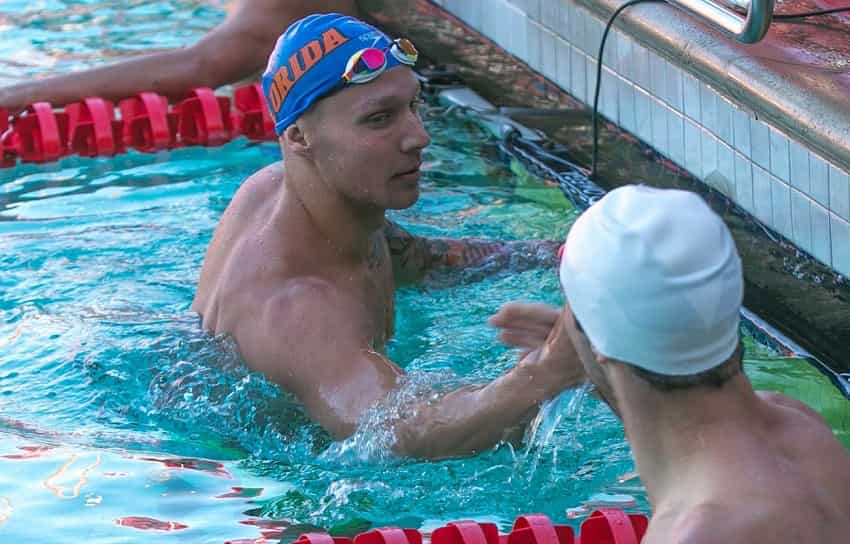
The history of our sport is littered with stories of triumph and adversity. There is a lot you can learn from the swimmers who have come before you.
Whether it’s learning how to handle failure, bouncing back from adversity, or setting better goals, there is plenty of lessons from the stars of the sport.
Below are some pieces of advice that you can take away from some of the champions past and present to better inform your own swimming this season.
Every morning we wake up, the alarm on our phones slowly buzzing to life. We all have that same desire to stay in bed, to finally use that awesome excuse we’ve been keeping in our back pocket, all so that we can crush some more sleep.
Michael Phelps, certified GOAT, made a point to have his goals written out on paper so that each morning when he woke up and felt that tantalizing pull back to the sheets he would remember his “why.”
“I have my goals somewhere I can see them, so when I get out of bed I know I’m waking up to work on what I’m trying to achieve,” said Phelps.
Swimming and all that is included in our sport—the early morning workouts, the test sets, the long away meets—is hard. Real hard. What makes it harder still is when we don’t have a convincing “why” driving us each day in the water.
It’s tempting to think that we can be wildly successful while “having it all.” But being even moderately successful at something requires sacrifices along the way. The parties that you will miss, the opportunities you miss out on—they are all given up for the sake of something bigger.
Janet Evans exhibited this all-in approach when it came to training, pulling days where she would do 20×400 IMs in practice, the last one fast enough to qualify for senior nationals. The crazy part? The set was her idea.
After a couple years at Stanford, and as the Barcelona Olympics were a year out, the NCAA put a cap on the amount of time student-athletes could train. A 20-hour per week limit clashed with Evans’ high yardage diet, which often ran up to 35 hours per week in the water.
Evans decided to leave the school program behind so that she could continue training, giving up the student-athlete experience (P.S. She was a 4.0 student while she was there) in order to get more time in the water.
Very few of us will approach this kind of fork in the road. But it is worth asking yourself what you are willing to sacrifice in order to be successful.
The first man to swim a :56 breaststroke relay leg, Adam Peaty has been treating the sprint breaststroke world records like punching dummies since 2015.
You would think this kind of superhuman swimming would mean the dude is all swimming, 24/7. Not so much. Peaty trains his butt off, and yet, the moment he goes home or he is away from the water there is one rule: don’t talk about swimming.
“Sometimes I go downstairs and my mum and dad are watching one of my races and I tell them to switch it off,” said Peaty. “If I start seeing that, I can’t stop thinking about it all night which means you are losing energy where you should be gaining energy.”
Does this mean you should go home and smash your mouth into a bottomless bag of Doritos? Go out with your friends and party the night before the big meet? Of course not. You can still live the lifestyle of an athlete without being obsessive about the sport while you are away from training.
“When I’m training, it’s game time, but as soon as I finish a race I completely switch off,” adds Peaty.
Having a balance in your life will allow you to more deeply recharge when you are away from the pool, which will help you train at a higher level and keep you from getting mentally exhausted on the sport.
We all have a perfectionist streak within us. For some swimmers, this means an unwillingness to push themselves in practice—finding where those limits are isn’t particularly enjoyable and can be humbling. Better to keep our no-fail record in tact.
Katie Ledecky doesn’t play that. She goes to work each day at the pool and essentially tries to fail. She gets that failing brings her closer to improvement.
Her coach at Nation’s Capitol, Bruce Gemmell, notes that she has a relentless appetite for improvement, which includes a healthy dose of failure.
“There are days she fails catastrophically,” Gemmell said. “She fails in practice more than anybody in her [training] group, because she’ll start out like, ‘This is the pace I need to swim in the race, so I need to replicate it in practice.’ And she’ll go six repeats like that, and the tank goes empty and she just falls off. But you know what? She’ll come back the next day and try it again. And on the third day, she’ll nail it. And she’s been doing this since the first day I walked on the deck with her.”
During the 1980s conventional wisdom said that to be a 15-year old female swimmer meant you were peaking. To be a 28-year old male swimmer meant you were washed up.
At the age of 14 Dara Torres broke her first world record. At 17 she won her first Olympic gold medal. After retiring she came back at the age of 32 to win five more medals at the Sydney Games in 2000. She would come back again to win three more silver medals at the age of 41 in Beijing. She did this in the face of endless doubters who said it was impossible.
People will always have an opinion about what is possible in the sport. This is the best form of training. This is what Swimmer XYZ can accomplish. Hasn’t been done before, so it’s impossible. But no one knows with full certainty. As Dara Torres said, “The water doesn’t know how old you are.”
What does the water know? Effort. Focus. Hard work. This isn’t a wholesale indictment of doubt, or to tell you to embrace being delusional with your goals, but it is a call to be a little more aggressive with what is possible. To see for yourself what your limits are.
It’s hard to overstate how much of a favorite Penny Heyns of South Africa was to win the 100m breaststroke at the Sydney Olympics. At the time she held five of the six world records in the breaststroke events in both short and long course. Heyns was also the defending Olympic champion in both breaststrokes.
This didn’t matter to brash and confident 16-year old Megan Quann (now Jendrick). The young American had spent the past couple of years visualizing her races before she’d go to sleep. Each time she won gold. Her imagery included everything about the race: the temperature of the water, the crispness of her kick, the tiles at the bottom of the pool. And every time she hit the wall? New world record.
“I’ve been visualizing my races every night before I go to bed,” she said during Olympic Trials in Indianapolis in 2000. “I visualize it with a stopwatch in my hand and every night my goal is to go a 1:05.49. I just visualized it the other day, and my time was a 1:05.47.”
Although the final time would be slower than her projected WR, Quann would pull the upset to win the gold. By the time she got up on the blocks she’d already raced this exact race a thousand times.
As Quann showed, visualization at its best works when you don’t treat it as a one-off tool that you use in case of emergency or as a last minute form of preparation. It’s as essential to your training as the stretching, the lactate sets, the post-race warm-down.
You know it is coming, that moment in your workouts or during your race where you *die.* Your shoulders start to seize. Your kick slows to half pace, even though you will them to kick faster. Your lungs and muscles for oxygen. It isn’t a pleasant experience, and yet, we somehow make it worse by not being mentally braced for it.
Garrett Weber-Gale, Olympic gold medalist and NCAA champion, would visualize that precise moment so that he would be ready for it. Even more importantly, he would picture himself conquering the moment:
“I do visualize that moment–the moment when my arms feel like sandbags,” says Weber-Gale. “When my legs are burning and my back feels like it’s tightening up like a rubber band. I get myself to the point where I am completely prepared for the pain. After imagining this point for a long time, I know I am able to endure the emotional stress and physical pain.”
One of my childhood idols, Perkins was the dominant force in the distance freestyles throughout the 1990s. This kind of sheer domination doesn’t come without difficulty, as you can well imagine.
Often the resistance we experience is from the people around us, whether it’s the swimmers in the same lane or our friends at school. They deride our goals, tell us it’s not a big deal, or that it’s only “one practice.”
The Australian distance king’s advice for the swimmer with big goals? Don’t let the unmotivated bring you down. Do your thing.
“That might mean doing something different to the rest of your peer group.”
During the lead-up to the US Olympic Trials in 2012 the coaches at Cal were working with two swimmers who couldn’t be more physically different. You had Nathan Adrian, at 6’7” and 220 who looks more like an NFL player than a swimmer.
And then you had Anthony Ervin, who hadn’t swum in a decade at 6’2” and 165 pounds and who couldn’t get into the “get your marks” position without shaking.
During a workout at the Olympic Training Center in Colorado Springs, the group was working out in the weight room. Adrian picked up two 160-pound dumbbells and proceeded to bench press them. Yup, sports fans, that is 320 pounds in dumbbell weight.
A couple benches over Ervin is watching the two Popeye-sized dumbbells being hurled into the air and is suddenly feeling a little silly about what he is trying to accomplish.
Cal’s strength coach at the time, Nick Folker, recalled Ervin walking out the gym understandably deflated after all this: “I am done, there is no way I can make this. How can I race a guy…”
Comparison-making is natural and can be helpful when we use it as a motivational tool. But when we take the best of others and compare it to our weaknesses we do ourselves a disservice. We stop focusing on the things that we do well.
How often have you bailed on a practice because you felt a little sluggish? Your stroke didn’t feel as awesome as usual? Or you simply weren’t “feeling it”? Giving up on the rest of the swim practice where you aren’t feeling the greatest is a wasted opportunity you will never get back.
Even though your stroke isn’t popping there are a multitude of things you can still focus on. How tight and crisp are your turns? How is that old streamline looking? How about some drill work for the soft spots in your technique?
Katie Ledecky, for all her superhuman performances in competition, is—gasp!—just like the rest of us. She has workouts where she isn’t feeling too hot, where it isn’t clicking the way it ought to be.
Her game plan when that happens?
“I try to make the good days great and take something positive from the days I’m not feeling good—work on technique or something like that,” says Ledecky.
One of the sneaky things that happens when you start working on your technique and form is that you begin to swim well. And when you start to swim well, you soon start swimming fast.
I get more emails about this than anything else: I work hard in practice but can never seem to get my head right when it comes to competition.
For the perennial practice swimmer, who throws down like a boss but is unable to channel that work into a superior performance at race time, it can feel endlessly infuriating. There are a lot of reasons that things don’t go your way on the blocks, but one of the more common ones is not understanding what your ideal emotional and mental state should be in those moments before the starter’s gun.
Peaty learned as a teenager that to get a better performance from himself meant that he would need to ramp up the aggression.
“When I was 15, I almost hated racing in finals because I was so nervous,” said Peaty. “But as I got more experienced, I had to choose between fight and flight—and I’ve fought every time.”
Get a little mad. Get a little fired up. It will help you channel the excitement and adrenaline you are feeling into something productive.
How often do you see your goals? Are they written down? Are they somewhere you will see them, whether on your pull buoy at practice (like Katie Ledecky) or on a sheet of paper next to your bed to get you out of bed in the mornings (like Michael Phelps)?
Michael Andrew, American NAG assassin and national champion, makes a point of writing out his goals and plastering them everywhere. The point of this is familiarity—you become so accustomed to seeing your goal that you absorb it as reality instead of a dream.
“I write them out by hand. I don’t type them,” said Andrew. “I take a big piece of paper and I write it out and post it on the wall around my room and home, so that I always see it. It becomes so familiar to me that I don’t notice it, because I start to believe in it so much.”
The big goal is critical. It acts as a compass for our effort each day in practice. It is the thing we dream about at night before collapse into sleep, and it is usually the thing that keeps us from going to Shametown on a large pizza instead of eating something healthy.
And while setting specific goals might be motivational for some swimmers (see previous point), 5-time Olympic gold medalist Nathan Adrian prefers a more process-based approach with swimming fast.
“There’s certain people who gravitate towards different techniques of goal setting,” said Adrian, originally from Bremerton, Washington. “I’m not a guy who sets numerical goals. That’s not something that works for me really well. It’s about executing the race that I’ve planned for the entire year.”
Instead of wanting to swim “fast” consider what that race would look like technically and focus on building that performance each day in training.
There are an endless number of tools and tricks that you can deploy to improve your swimming. There’s an endless pile of swimming gear: different types of paddles, DragSox, short fins, long fins, super suits and everything in between.
One of the time-tested tools is a simple notebook and a pen. The swimmer’s log book.
Sprint monster Caeleb Dressel has been using log books since he was an age grouper, sometimes hopping out of the water mid-session to pen thoughts on something he was experiencing in the water while it was fresh in his mind.
Jason Calanog, the coach who helped develop Dressel as a youngster with the Bolles Sharks, recommended that the young star write out his workouts.
“His entries were definitely at a higher level than I’ve ever seen by a swimmer,” Calanog said. “He’d write pages and pages about how every muscle felt and what he wanted his stroke to feel like.”
While a lot of swimmers will write out their workout, they won’t reflect and evaluate on what they are doing. They will stick to volume and intervals. In essence, they are robbing themselves of the principal benefit of logging those workouts—the ability to learn and improve more quickly.
Competition is daunting for many swimmers. We invest hours and hours in training in order to get up on the block and have the perfect race. No pressure, right? So you can imagine how hard it then becomes to bounce back in the middle of a big meet when your first race doesn’t go according to plan.
Sweden’s Sarah Sjostrom, the fastest 50 and 100m freestyler in history, credits her ability to refocus after a race, good or bad, for her consistency in competition.
She credits getting up on the blocks as often as possible—in particular with the FINA World Cup Series—to help condition this type of mental resiliency, “It is always about refocusing. It is a lot of racing.”
The man dominated the sprint freestyle events for the better part of a decade, winning back to back gold medals in the 50 and 100m freestyles. For Russian Alex Popov, there was always something he could improve on with his technique. Always a slight edge to be found.
During training his coach Gennadi Touretski would often prescribe long, unbroken sets of straight freestyle swimming (up to 5,000m straight). The point? To swim with perfect technique or not at all. Popov would speed up to a point where his technique would start to fall apart before backing off.
With each stroke cycle, with each lap Popov was building perhaps the most efficient freestyle in the history of the sport. Consider this–when he broke the world record for the 50m freestyle at Russia’s Olympic Trials in 2000 he swam 21.64 with just 31 strokes.
At the 1980 Olympics in Moscow Vladimir Salnikov became the first man in history to crack the 15-minute barrier in the mile. The only problem? The gold medal felt hollow without the western world there, boycotting to protest the Soviet invasion of Afghanistan. Four years later the Russians boycotted the LA Games. Through all this Salnikov kept training, all in the hopes of eventually winning an Olympic gold medal with the whole world present.
At the Seoul Olympics in 1988, a competition where his own swimming federation didn’t want to bring him because they considered him washed up, Salnikov would soldier through the final of the 1500m, finally winning that elusive gold medal.
That night entering the Olympic village he was given a standing ovation by athletes of every country, every sport. Our goals tend to take longer than we expect to accomplish them, which will only make them sweeter.
You know what race I’m going to bring up. That race. The infamous relay leg at the Beijing Olympics.
With Jason Lezak on the anchor leg faced off against the former world record holder Alain Bernard of France, gold for the Americans seemed an impossibility. Lezak pulled the miracle, swimming a 46.0 to out-touch the French at the wall and give the Americans gold and Phelps a chance at completing his 8-gold medal winning haul.
It’s never over. Don’t give up.
At the 1988 Seoul Olympics Matt Biondi was favored to win a whole bunch of events, including the 100m butterfly. And for 99m of the race, he was doing just that.
But as Biondi charged into the wall he was faced with the dilemma of gliding into the wall or finishing on a half stroke. He chose to glide, and during that fraction of a second Anthony Nesty of Suriname closed on a full stroke to take the gold.
These are the seemingly minor details that you work on in practice so that you don’t have to roll the dice in competition. Streamline, a tight turn, not breathing into the walls, finishing on a full stroke—these are basic and seemingly rudimentary skills that only get more critical as you develop as an athlete.
You only truly learn what you can do by working your tail off. By pushing yourself as close as you can to the edge. You can easily tell yourself that you can’t do a bunch of fast 50s under 30 seconds off the blocks, or an extra couple workouts, or stay after practice to run stairs, but the moment you do it, the quicker what you think is possible begins to change.
Olympic champion distance ace Mike Burton, who trained with Mark Spitz under Sherm Chavoor, reminisced on a Saturday morning practice where the group did a 1650 for time…after already having done a two hour workout.
“I was so shot afterward. I’ve never been that tired in my life, neither before nor after that Saturday,” he said years later, smiling. “But I knew from that point on that there was nothing Sherm could give me that I couldn’t handle.”
If you’ve heard it once, you’ve likely heard it a thousand times: Trust the process, the results will take care of themselves.
As swimmers our eyes are constantly on the horizon looking for medals, records, and best times. Even though we have work to do today, we stress and get anxious over the results down the line. But by focusing on the process-the day to day pursuit of excellence—we retain control over our preparation that infuses us with confidence.
Kylie’s coach Byron MacDonald, himself an Olympian, notes, “A lot of people worry about the outcome and she just focuses on the process and likes to challenge herself.”
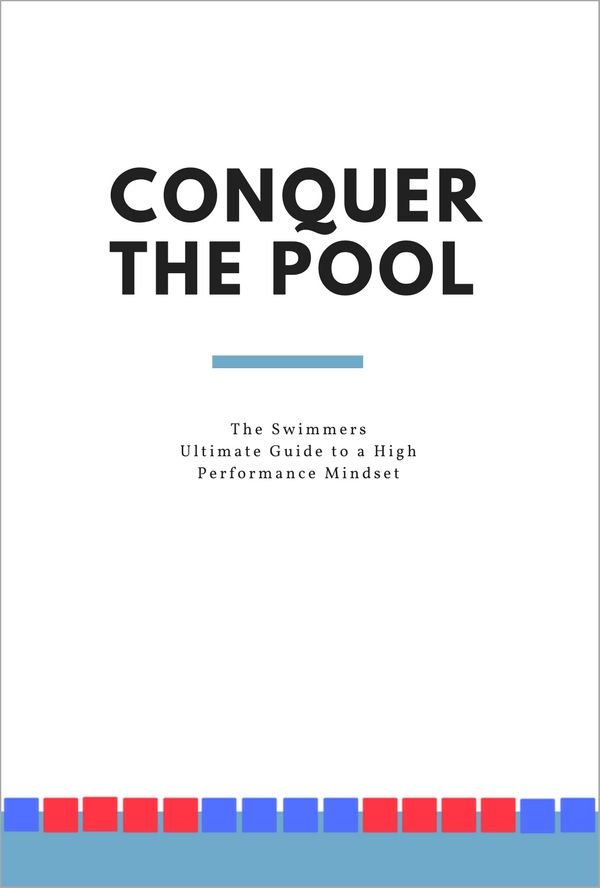 Want more help with mental training?
Want more help with mental training?Whether you are tired of choking on race day, want to finally conquer your mindset so that you can give your PB’s the beating they deserve, or you want to develop a killer game plan for your mindset, Conquer the Pool is your ticket to faster swimming.
Used and trusted by some of the top clubs and swimmers on the planet and written the feedback of 200+ head coaches, Olympians, former world record holders and NCAA champions.

Olivier Poirier-Leroy Olivier Poirier-Leroy is the founder of YourSwimLog.com. He is an author, former national level swimmer, two-time Olympic Trials qualifier, and swim coach.
✅ Free shipping on Orders over $49
✅ Price Match Guarantee
✅ Best selection of gear for training and competition
✅ Fast and Easy Returns

“This is the best book I have ever seen concerning mental training.” — Ray Benecki, Head Coach, The FISH Swim Team


Wondering what visualization can do for your swimming? Here are some evidence-based benefits of visualization for swimmers for more confidence, less choking, and even better technique.
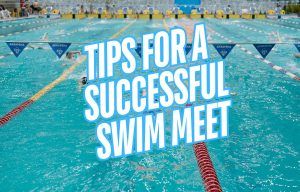
Ready to uncork some best times at your next swim meet? Here’s what you need to know to prepare for a swim meet.
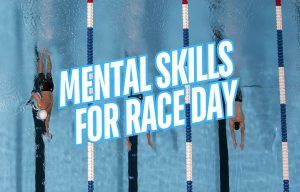
The right mental skills can help you unlock faster swimming on race day. Here is a look at the right skills to use for competition.
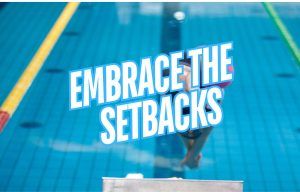
Frustrated with setbacks in the pool? Here are some tips for improving your ability to embrace setbacks and swim faster.
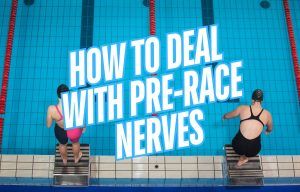
Struggling to swim fast under pressure? Here are some tips for how to manage pre-race nerves on race day.
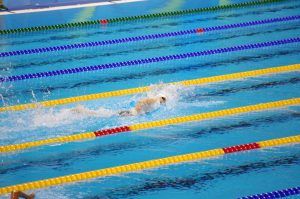
Swimmers often find themselves stuck with doubt when it comes to doing tough things in the water. Here’s a simple question to ask when you find doubt and uncertainty stopping you from excellence.
SITE
SHOP
GUIDES

LANE 6 PUBLISHING LLC © 2012-2025
Join 33,000+ swimmers and swim coaches learning what it takes to swim faster.
Technique tips, training research, mental training skills, and lessons and advice from the best swimmers and coaches on the planet.
No Spam, Ever. Unsubscribe anytime.
